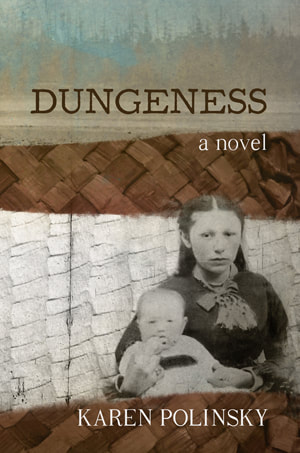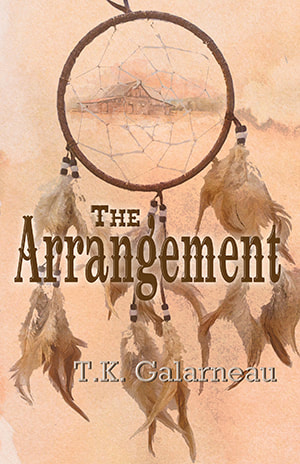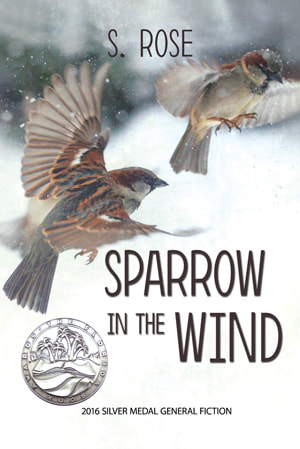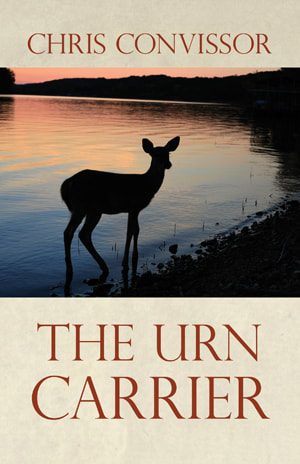Buy
DetailsBink Books
280 pp. ● 5.5×8.5 $14.95 (pb) ● $8.99 (eb) ISBN 978-1-945805-18-9 (pb) FICTION Publication date: July 2017 |
|
Spanning the latter half of the nineteenth century, this coming-of-age novel unfolds in the form of a historian’s notebook. Protagonist and narrator Millie Langlie (daughter of a S’Klallam maiden and a Norwegian mariner) is an adventurous girl with a curious mind. Guided by the gift of a pair of silver fish earrings, she unearths an anomalous Indian-on-Indian massacre and confronts her mother’s secret love affair. Journeying from the Strait of Juan de Fuca to Port Townsend and back again, Millie discovers how knowledge of the past can teach us to love, forgive, and forge a new path.
|
Visit
|
-
Praise
-
Excerpt
-
For Reading Groups
<
>
” . . . the writer has created an overall unity combining truth, human frailty and strength, and philosophical depth. She has taken Mary Ann Lambert’s knowledge and understanding to create a multi-dimensional picture of a place, a time and a mingling of people . . . The novel’s strength is its sensory detail as noted by a child of nature. It’s a book to be read word-by-word to savor its full depth and meaning.” — Review, Historical Novel Society
“Dungeness is a remarkable work. Karen Polinsky weaves a rich tapestry of fact and fiction, sprinkled with Northwest native art, language, and historical images, about the churning cultural changes of the Olympic Peninsula in the 1870s, seen through a young native girl’s experiences. But even more than this, Polinsky imbues her narrative with a deep and captivating sense of mystery. A wonderful work; deserves to be reprinted and spread broadly.” — Joe Upton, Alaska Blues: A Story of Freedom, Risk and Living Your Dream
“Dungeness is a remarkable work. Karen Polinsky weaves a rich tapestry of fact and fiction, sprinkled with Northwest native art, language, and historical images, about the churning cultural changes of the Olympic Peninsula in the 1870s, seen through a young native girl’s experiences. But even more than this, Polinsky imbues her narrative with a deep and captivating sense of mystery. A wonderful work; deserves to be reprinted and spread broadly.” — Joe Upton, Alaska Blues: A Story of Freedom, Risk and Living Your Dream
“Breathe,” I said.
Less than a minute before, I had been startled into wakefulness by screaming victims with bleeding eyes and bursted skulls. I was five. For more than a year the recurring nightmare of a massacre—what and where? And why me? The lightless hours of whispering rain: a deadly lullaby.
But tonight something other than the dream had waked me. It wasn’t a sound, but the silence. On trembling knee, I made my way down the hemp ladder.
The hearthside, dim and breezy. Inside the cradle, creaking on a beam, Charley’s bright eyes called for help. Seya, resting on a cedar mat by the fire, stirred. Alarmed, she pulled herself up, reached into the cradle and lifted him up.
The baby rattled.
She tossed a blanket over him and prepared to set out. Not for the white doctor: she had little faith in his methods, and no cash to pay him—but for the Sunday morning service at the Indian Shaker Church in Jamestown. A new religion founded by a modern-day prophet from Squaxin Island.
A new magic.
Reluctantly, Annie agreed.
I inserted, “Me, too.”
Seya replied, “Fine. As long as we go now.”
From the alcove bed Carl groaned.
The bleak path unfurled. The floating tips of the evergreen bough beckoned. Through the mossy mist, my grandmother advanced. With my heart scampering, I hurried to keep up with her. “Let me.” She handed me the bundle, a tight package except for the hanging fist that bounced. By the time we reached the first full twist in the path, through a sweeping dome of Douglas fir, I drooped.
Annie rescued me. I held onto the tips of Seya’s dry fingertips. Annie followed, singing lightly to the infant pressed against her chest. Every so often I tilted my head back to watch the fir canopy exhale.
Like the curtain between dream and waking, the tangled rhododendrons and the mist parted. The Jamestown Church, also the schoolhouse, erected in 1878, gleamed in spilt sunshine like the froth on top of milk. With its pretty picket fence, mission-style portico, and steep cedar shingled roof, the Jamestown church was the first on the Olympic Peninsula to sound its bell.
Just north of Sequim, Jamestown was not a “preserve for Natives,” but instead an independent, privately owned township purchased for five hundred dollars by the S’Klallam residents who refused to be removed to the Skykomish Reservation, one hundred miles south, overcrowded with near and far neighbors who were not always friends. Under the leadership of Tuls-Met-Tum, known to whites as Lord Jim Balch, S’Klallam families pooled their resources to purchase the two-hundred-and-ten-acre parcel from the white farmer Richard Delanta.
Reverend Myron Eells, a missionary from the Skokomish Reservation, serving as a local minister for thirty-three years, named the new township after Balch. The total acreage of Jamestown was a hundred acres less than the three-hundred-and-sixty acres allotted by the Donation Land Claim Act, one third of the land awarded to a married white couple. Nevertheless, Jamestown afforded the Indian villagers a chance to determine their own destiny.
First light crowned Mount Baker. The air sang: horses stamping; women gossiping; unbridled children shrieking; the yap of a little dog; the bleat of an insistent lamb. To me, a little girl who mostly stayed at home, it felt like Election Day or the Fourth of July. I wanted to shout and to clap, to stamp my feet. Then, I thought of Charley.
Without a word, Seya took the hot bundle from Annie and headed for the door underneath a portico. For more than a minute Annie remained, staring at nothing.
Absentmindedly she hauled me from the churchyard, past the whitewashed cottages, to a twisted tree on the edge of the shore. The day turned clear. She kicked off her shoes and sat down on top of her full skirt. Annie leaned back onto the prickly grass and closed her eyes, the same shape as the brittle Madrone leaves. I leaned against the tree and curled off the bark to the polished ceramic of the unexposed wood.
“It’s odd,” she said. “The Indian Shakers took my baby. Right now they’re bathing him in holy water, palpitating him with their dirty hands, disturbing him with their bells. Maybe they’ll cure him. Maybe they’ll kill him.”
I sucked on my muddy thumbnail.
“Don’t cry. Have some breakfast.” From the pocket of her skirt she retrieved a charred lump of potato, one that turned my lips and the inside of my mouth black.
She did her best to smile. “Want to hear a story?”
Less than a minute before, I had been startled into wakefulness by screaming victims with bleeding eyes and bursted skulls. I was five. For more than a year the recurring nightmare of a massacre—what and where? And why me? The lightless hours of whispering rain: a deadly lullaby.
But tonight something other than the dream had waked me. It wasn’t a sound, but the silence. On trembling knee, I made my way down the hemp ladder.
The hearthside, dim and breezy. Inside the cradle, creaking on a beam, Charley’s bright eyes called for help. Seya, resting on a cedar mat by the fire, stirred. Alarmed, she pulled herself up, reached into the cradle and lifted him up.
The baby rattled.
She tossed a blanket over him and prepared to set out. Not for the white doctor: she had little faith in his methods, and no cash to pay him—but for the Sunday morning service at the Indian Shaker Church in Jamestown. A new religion founded by a modern-day prophet from Squaxin Island.
A new magic.
Reluctantly, Annie agreed.
I inserted, “Me, too.”
Seya replied, “Fine. As long as we go now.”
From the alcove bed Carl groaned.
The bleak path unfurled. The floating tips of the evergreen bough beckoned. Through the mossy mist, my grandmother advanced. With my heart scampering, I hurried to keep up with her. “Let me.” She handed me the bundle, a tight package except for the hanging fist that bounced. By the time we reached the first full twist in the path, through a sweeping dome of Douglas fir, I drooped.
Annie rescued me. I held onto the tips of Seya’s dry fingertips. Annie followed, singing lightly to the infant pressed against her chest. Every so often I tilted my head back to watch the fir canopy exhale.
Like the curtain between dream and waking, the tangled rhododendrons and the mist parted. The Jamestown Church, also the schoolhouse, erected in 1878, gleamed in spilt sunshine like the froth on top of milk. With its pretty picket fence, mission-style portico, and steep cedar shingled roof, the Jamestown church was the first on the Olympic Peninsula to sound its bell.
Just north of Sequim, Jamestown was not a “preserve for Natives,” but instead an independent, privately owned township purchased for five hundred dollars by the S’Klallam residents who refused to be removed to the Skykomish Reservation, one hundred miles south, overcrowded with near and far neighbors who were not always friends. Under the leadership of Tuls-Met-Tum, known to whites as Lord Jim Balch, S’Klallam families pooled their resources to purchase the two-hundred-and-ten-acre parcel from the white farmer Richard Delanta.
Reverend Myron Eells, a missionary from the Skokomish Reservation, serving as a local minister for thirty-three years, named the new township after Balch. The total acreage of Jamestown was a hundred acres less than the three-hundred-and-sixty acres allotted by the Donation Land Claim Act, one third of the land awarded to a married white couple. Nevertheless, Jamestown afforded the Indian villagers a chance to determine their own destiny.
First light crowned Mount Baker. The air sang: horses stamping; women gossiping; unbridled children shrieking; the yap of a little dog; the bleat of an insistent lamb. To me, a little girl who mostly stayed at home, it felt like Election Day or the Fourth of July. I wanted to shout and to clap, to stamp my feet. Then, I thought of Charley.
Without a word, Seya took the hot bundle from Annie and headed for the door underneath a portico. For more than a minute Annie remained, staring at nothing.
Absentmindedly she hauled me from the churchyard, past the whitewashed cottages, to a twisted tree on the edge of the shore. The day turned clear. She kicked off her shoes and sat down on top of her full skirt. Annie leaned back onto the prickly grass and closed her eyes, the same shape as the brittle Madrone leaves. I leaned against the tree and curled off the bark to the polished ceramic of the unexposed wood.
“It’s odd,” she said. “The Indian Shakers took my baby. Right now they’re bathing him in holy water, palpitating him with their dirty hands, disturbing him with their bells. Maybe they’ll cure him. Maybe they’ll kill him.”
I sucked on my muddy thumbnail.
“Don’t cry. Have some breakfast.” From the pocket of her skirt she retrieved a charred lump of potato, one that turned my lips and the inside of my mouth black.
She did her best to smile. “Want to hear a story?”
Book Clubs & Reading Groups Discussion Guide
| Dungeness Reading Guide | |
| File Size: | 901 kb |
| File Type: | |
From the author
Twenty years ago I packed up the Toyota with my three kids and traveled west from Boston to Seattle. While I waited to apply for teaching positions, I wrote for the Kitsap Sun, a local paper. This took me to the Little Boston S’Klallam reservation where I interviewed folks about significant job losses after the Port Gamble lumber mill shut down. Marie Hebert, who is still the cultural resources director for the Little Boston S’Klallam Tribe, handed me a book of S’Klallam primary source documents called Shadows of Our Ancestors, edited by Jerry Gorsline.
I immediately became curious about Mary Ann Lambert and her motive for writing down these unique folktales. Delving into this research, I created Millie Langlie (inspired by S’Klallam historian Mary Ann Lambert’s example) as a guide to the past for modern readers at the high school level and above. Today, many of us cope with more than one ethnic identity. Many of us find ourselves trapped between contradictory worldviews. Things are never quite what they seem. Can we allow our curiosity to take us behind the misty green curtain?
Twenty years ago I packed up the Toyota with my three kids and traveled west from Boston to Seattle. While I waited to apply for teaching positions, I wrote for the Kitsap Sun, a local paper. This took me to the Little Boston S’Klallam reservation where I interviewed folks about significant job losses after the Port Gamble lumber mill shut down. Marie Hebert, who is still the cultural resources director for the Little Boston S’Klallam Tribe, handed me a book of S’Klallam primary source documents called Shadows of Our Ancestors, edited by Jerry Gorsline.
I immediately became curious about Mary Ann Lambert and her motive for writing down these unique folktales. Delving into this research, I created Millie Langlie (inspired by S’Klallam historian Mary Ann Lambert’s example) as a guide to the past for modern readers at the high school level and above. Today, many of us cope with more than one ethnic identity. Many of us find ourselves trapped between contradictory worldviews. Things are never quite what they seem. Can we allow our curiosity to take us behind the misty green curtain?
|
Discussion Questions
1. What’s unusual about this book? What is the role of essays, primary documents and artifacts historic photos and contemporary art in the fictional coming-of-age quest of Millie Langlie? How do these elements enhance the story? 2. In the post 1855-Treaty period, what is the impact of whites on the S’Klallam villages in Dungeness? According to explorer and writer Judge James Swan, who has a more advanced idea of justice, the whites or the S’Klallam. Why? 3. Millie’s young S’Klallam mother and her older Norwegian dad disagree how to raise her. What are her mother’s values? How does she wish to bring her up, educate her? Her father Carl? How does Millie respond to these conflicting expectations? 4. What does Millie learn at the one-room schoolhouse from her teacher, the Utopian socialist Miss Delia Bright? What are the unintended lessons of her early education? 5. What is the significance of the silver fish earrings? How did Annie get them, and why does she give them to Millie? Are the earrings a curse, as her grandmother repeatedly declares, or are they a blessing? What makes you think so? 6. At the Dungeness Light Station, what does Millie promise George? What secret power does he derive from his encounter with the rotten herring, his tamanowas? Will Millie discover a spirit guardian? Why does she want to? 7. Is the Makah jack-of-all-trades Jake Cook trustworthy? Why or why not? What unanswered questions continue to rise to the surface about his past, and his role in the lives of Millie’s family? What is he really after? 8. How does Millie’s view of the world contrast to the variety of city-dwellers in Port Townsend? Contrast her ideas to those of the Mathiesons: about friendship, education, good and bad Indians, the role of woman, and love. How does life in Port Townsend change her? 9. Millie is attracted first to George, then to the actor Thomas Astor, and to the Haida artist Johnny Kit Elswa. What goes right; what goes wrong? Will she ever find romantic love? 10. What does Millie discover upon her return to Dungeness? Does she find what she is looking for? |
Other Books You May Like
Books & Imprints |
Information |
Contact |
Proudly powered by Weebly





